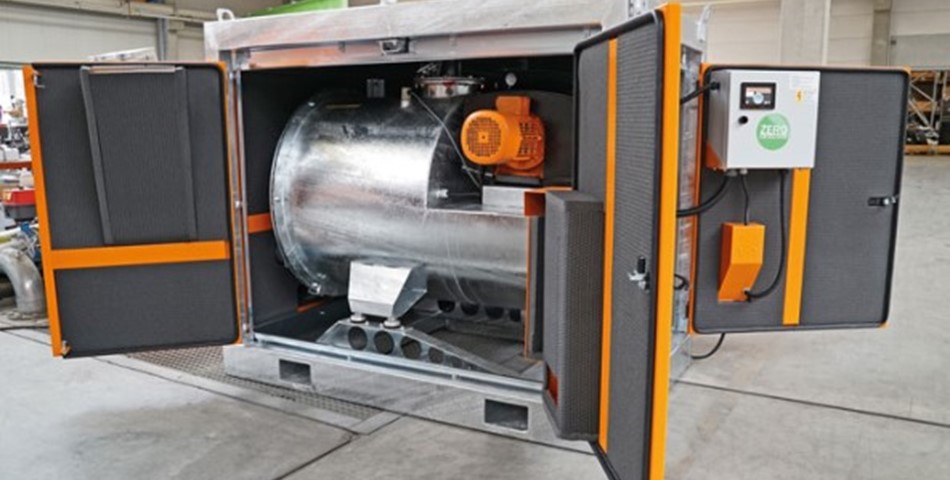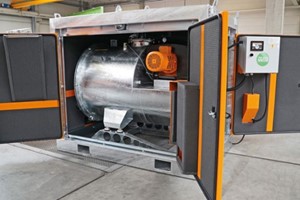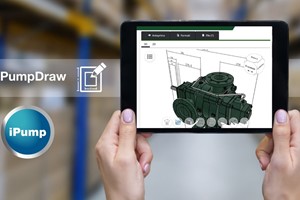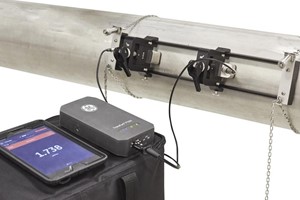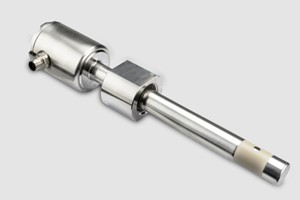IIoT on construction sites: Turck’s cloud solution enables users and operators of Hüdig’s site dewatering solutions to have access to the device status at any time
The Hüdig GmbH & Co. KG in Celle is a pump systems specialist manufactures products that include units for irrigation and dewatering. The irrigation pumps are generally used in agriculture. The drainage pumps are mainly used on construction sites where the groundwater has to be lowered during the construction phase. “These pumps have to run around the clock, because considerable financial damage is caused if the building site pit fills up with water,” explains Lennart Heers, sales manager at Hüdig.
Technically, the dewatering pumps consist of two installed pumps. An air pump that creates a vacuum and sucks the water out of the ground via lances. In the same way as how you “suck out” a drink with a straw. This water still has air bubbles in it and is then collected in the unit in an intermediate tank at ground level on the construction site and discharged directly into a stream or other drain via a conventional water pump.
Specialist companies responsible for dewatering on large construction sites
The vacuum units are large metal boxes that can be found on almost every construction site. In large construction projects, dewatering is usually contracted out to specialist subcontractors who are solely responsible for this task. For the developer, this has the advantage that he can concentrate exclusively on the construction activities in the narrower sense. In addition to the actual task of lowering the groundwater, the dewatering companies also take care of the permits and the necessary documentation. “But these companies are usually not on site at all. They install the pump, press the start button and then leave. After that, they come at regular intervals and check whether everything is still in order,” says Heers, describing the division of tasks at the site.
Original solution costly for remote information
This is where Hüdig came to offer its customers the possibility of seeing how the pump is doing, even from a distance. The first systems for remote maintenance consisted of three components: a controller, a communication module and a display. However, the system required complex programming: “Our programmers had to program the controller and also the communication between the controller and the modem as well as between the modem and the cloud – and then the visualization on the display,” says Heers.
When the manufacturer discontinued the modem, Hüdig looked around for an alternative system for data storage and remote access – and found what they were looking for at Turck. The required functions were a Codesys-based controller so that most of the programming of the original system could be transferred, as well as a cloud gateway for storing and retrieving data centrally. The system also had to be able to send alarm messages and information.
Control, display and cloud communication in one device
Turck’s TX700 HMI controller impressed the decision makers at Hüdig. It meets all the requirements and also has the advantage of integrating the three functions of control, display and cloud communication in a single device. Programming has become much easier with the switch to Turck. Today, only one device needs to be programmed, as the logic and visualization are already integrated. The cloud-related variables are then selected with just two or three clicks. “This means that we have one programming and one device and no longer three programmings on three devices, which of course saves a lot of time and effort,” says the sales manager about the cloud solution.
Site manager receives info messages on pump status
Customers who use a vacuum unit with a cloud connection can not only include their own service staff but also the site manager in the list of people to be alerted. In this way, those responsible find out directly at the construction site if something is wrong with the pump. “Often these are routine things such as a disconnected hose, a tripped RCD or an interrupted power supply because a plug was pulled out by mistake. This can also be helpful for the companies in relation to legal issues if it is documented that a warning message has been sent. We can even set the mandatory acknowledgement of the message. This has been well thought out,” reports Lennart Heers.



